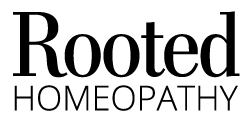What is Homeopathy?
Homeopathy is NOT home remedies, herbalism, essential oils, supplements, etc. Homeopathy is its own stand-alone system of health and wellness care.
Homeopathy has nothing to do with the “home.” It comes from two Greek words:
homeos = similar
pathos = suffering
So, homeopathy is best translated as similar suffering, which is the basis of homeopathy. Finding a substance that if given in its gross form can symptoms similar to the condition with which a person is suffering. Homeopathic remedies can be made from pretty much anything – including plants, animals, minerals, imponderables, and more. The difference with homeopathy is that remedies are chosen based on the law of similars, using a minimum dose and potentized.
The Law of Similars
Homeopathy was developed by German physician Samuel Hahnemann in the late 1700’s. Hahnemann was frustrated by the allopathic practices of the time, which included barbaric treatments like bloodletting and mercury. He was fluent in many languages and it was a translation project led him to experiment with Peruvian bark for the treatment of malaria. He discovered the Law of Similars or more simply the idea that “like cures like.”
The Law of the Minimum Dose
As Dr. Hahnemann conducted provings of substances and used these substances in their natural state, he eventually found that through a process of dilution and succession, the toxic effects of the original substance could be removed and that a smaller dose actually has a greater strength of action. The law of the minimum dose says to give the smallest possible dose of a substance that stimulates a response.
Potentization
Homeopathic remedies are based on this inverse relationship of the minimum dose. The more diluted the remedy is the more potent its action. Remedies are created through a process of potentization and succussion. You’ll commonly see homeopathic remedies marked with the Latin name of the original substance and a number such as 30C or 200C.
Provings
Hahnemann methodically discovered the symptoms and effects of various substances through a process called proving. Homeopathic provings are still being conducted today to discover the symptoms of a substance or a substance’s remedy picture. This information is gathered in a books called a material medica.
Regulations & Studies
In the United States, homeopathic remedies are classified and regulated as drugs under the 1938 Food and Drug and Cosmetic Act. The HPUS or Homeopathic Pharmacopia of the United States details the formulas and methods for preparing homeopathic remedies. The FDA oversees homeopathic products and pharmacies to enforce good manufacturing practices but does not evaluate the traditional use claims of homeopathy.
Homeopathy has been used around the world for over 200 hundred years in the form we now use it, but roots of homeopathic ideas goes back much farther. Some homeopathic ideas can be found in ancient medical systems and writings. We can even find the idea of similitude in Scripture.
Because homeopathic remedies cannot be patented, research funds have been limited for modern studies. Despite this, many studies can still be found in PubMed and other places. We also have provings conducted by homeopaths, which are kind of like drug trials, and volumes and volumes of documented clinical use from around the world in books, material medicas, and repertories.
